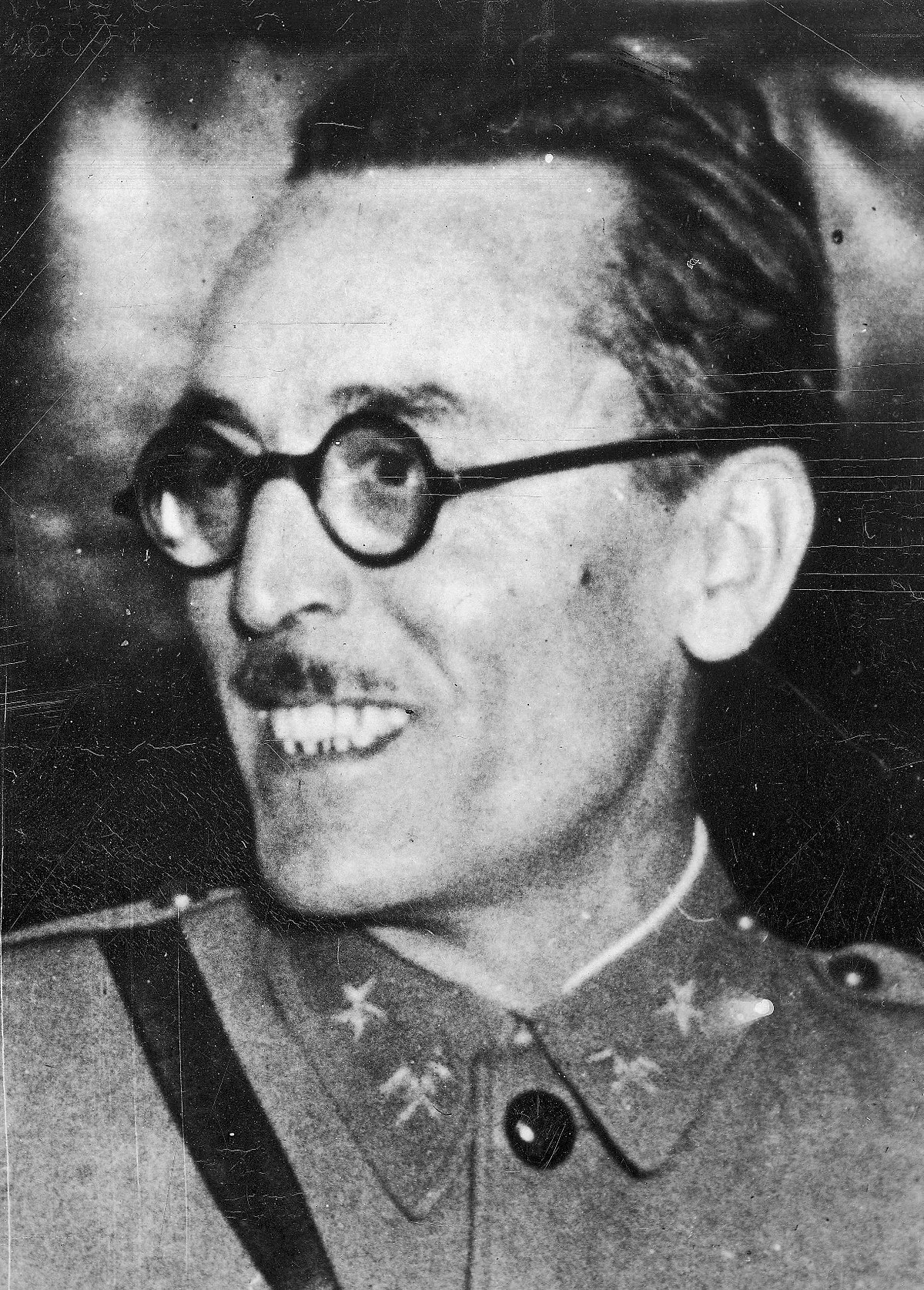 1.
1. Segismundo Casado Lopez was a Spanish Army officer; he served during the late Restoration, the Primo de Rivera dictatorship and the Second Spanish Republic.

 1.
1. Segismundo Casado Lopez was a Spanish Army officer; he served during the late Restoration, the Primo de Rivera dictatorship and the Second Spanish Republic.
Segismundo Casado is best known as leader of the coup against the government of Juan Negrin; its objectives were preventing a Communist takeover and terminating fratricidal bloodshed during the war, considered already lost.
The rebels seized control of the Republican zone; in their quasi-government Casado served as the minister of defense.
Negotiations with the Nationalists failed; Segismundo Casado went on exile, first to Britain and from 1947 to Latin America, returning to Spain in 1961.
In 1918 Segismundo Casado entered Escuela Superior de Guerra; in 1919 he was promoted to captain.
In 1921 Segismundo Casado was transferred to Larache in Spanish Morocco and assigned to a machine-gun company, deployed mostly as protection of various logistics operations.
Segismundo Casado was appreciated by superiors, who in reports noted Casado's distinguished role in combat and in the rear.
In 1924 Segismundo Casado was recorded within the Alcala de Henares garrison.
Segismundo Casado assumed command of a squadron in the Regimento de Lanceros de la Reina in Madrid the following year.
Segismundo Casado continued to work in Escuela Superior; in 1931 he published a study, Organizacion del Ejercito Frances, and in 1933 Empleo de la Division de Caballeria en el Servicio de Exploracion estrategica followed.
In early 1935 Segismundo Casado was nominated commander of personal detachment of the president, Niceto Alcala-Zamora; from May 1936 he performed the same role serving the new president, Manuel Azana.
In late 1936 Segismundo Casado remained engaged in organisation, planning and teaching.
In May 1937 Segismundo Casado was nominated general inspector of the cavalry.
In September 1937 Segismundo Casado was nominated commander of the newly formed XXI Army Corps, deployed in Aragon.
Segismundo Casado was increasingly convinced that the war was already lost, and that further resistance would only produce unnecessary deaths, suffering and destruction.
Segismundo Casado blamed the Communists for prolonging the war in the interest of the Soviet Union.
In late 1938 Segismundo Casado engaged in talks with some politicians about forming an anti-Negrin opposition, and in early 1939 he entered into secret peace talks with the Nationalists.
Segismundo Casado was the key man behind CND; during a phone talk with Negrin he refused to budge.
Segismundo Casado temporarily acted as the CND president, but ceded the post to general Miaja the following day and within the body he assumed office as counselor of defence.
Once CND assumed full control over the Republic, Segismundo Casado took part in some juridical proceedings, resulting in death sentences and execution of some Communist leaders, including Luis Barcelo.
Segismundo Casado intended to negotiate a staged surrender, evacuation of all those willing to leave Spain, with the added proviso of no political repression afterwards; he might have even hoped for re-integration of professional Republican officers into the post-war army.
The Nationalists demanded immediate and unconditional surrender; and with no such document signed, Segismundo Casado eventually realised that further negotiations were pointless.
Segismundo Casado was transported to Marseille on a British hospital ship.
Segismundo Casado then travelled to the United Kingdom, most likely with approval of the London government.
Segismundo Casado received a stipend from the British Committee for Refugees from Spain; following intervention of the Foreign Office, his allowances were set at a higher rate than normally.
Segismundo Casado wrote The Last Days of Madrid, the book translated and published in record time; one author suspects MI6 was involved.
At some time Segismundo Casado got professionally involved with the Swiss multi-national food conglomerate Nestle.
Segismundo Casado might have hoped for some role in politics, as he speculated that following the end of World War Two and in the atmosphere of international anti-Franco ostracism, the British were likely to enforce the fall of the Franco regime, an outcome that might see a role for him back in Spain.
Segismundo Casado spent 12 years there, touring the country as a commercial representative.
In 1961 Segismundo Casado returned to Spain; it is not clear whether before doing so he had any contacts with the Francoist administration.
Segismundo Casado settled in Madrid at calle Cea Bermudez and initially was not subject to any juridical or administrative harassment, this despite the fact that in 1943 he had been tried by Tribunal Especial para la Represion de la Masoneria y el Comunismo and in 1944 had been sentenced to 12 years in prison for rebellion.
In 1920 Segismundo Casado married Maria de las Mercedes de la Calle Condado; none of the sources consulted provides any information either on her or on her family, except that she survived the civil war.
At unspecified time, either in the early or in the mid-1930s, Segismundo Casado married Maria del Carmen Santodomingo de Vega.
In unclear circumstances the family got separated upon Segismundo Casado leaving Spain in 1939; his wife and children remained in the country and initially sought refuge in the diplomatic legation of Panama.
Segismundo Casado had at least one brother, Cesar; it is not clear who of the siblings was older.
Segismundo Casado was recorded as related to the Madrid branch of the Anarchist trade union CNT.
Segismundo Casado did not welcome the Primo de Rivera dictatorship; in his own papers Casado refers to himself as a rebel, though there is no evidence of any rebellious activity recorded.
Segismundo Casado's brother seemed related to the Anarchist CNT, but there is no evidence that Segismundo was close to Anarchism; neither is there any data which points to his relation to Socialism.
In popular discourse of Francoist Spain, Segismundo Casado was rather absent; if mentioned, he was noted as the one who mounted a pre-emptive anti-Communist strike.
Segismundo Casado featured as a protagonist in a few Spanish novels, set in the Madrid of early 1939.